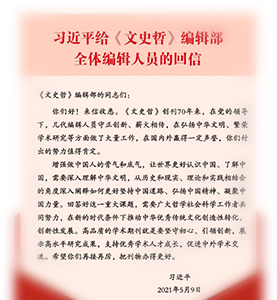道家消长律与佛教缘起法之哲学比较——以《老子》与《中论》为主的考察
林建德
摘要:道家与佛教皆被视为有智慧的哲学学派或宗教,但两大传统的核心思想之间,到底有什么样的相同与相异之处呢?从《老子》之“道”所呈现的两两消长之律,以及《中论》的“空”所要展现的缘起中道作一对比,析探早期道、佛核心义理系统各自的特色。就《中论》而言,万物间皆是因此故彼的因缘和合,就《老子》来说,万物皆在此彼的盈虚消长之中。佛教的因缘理论与道家的消长之道,虽然在表面上可有相似之处,如共同指出无常变化为世间的现象,但细部而论,佛教的此有彼有的因缘法则、因果律,与道家的此有彼无的消长律,实则并不相同。《中论》上承阿含、般若等思想,表达印度佛学中道不二的意旨,使能舍离二边而从苦难中解脱;其所谈的因缘,牵涉到的法义是四圣谛、十二因缘、空、假名、二谛等。但《老子》象征中国哲学的思想传统,与《庄》、《易》等书开展出阴阳、有无等的两仪、两极、两全或两行之道,重视两两关系间的变化、辩证以及和谐、统一等,所论的消长之道,关联或延伸的哲学概念,乃是道、自然、天人、刚柔、动静、阴阳、虚实、有无等。就此而言,中国老学及道家哲学的两两、两仪之道,与印度中观学和佛教思想的不二中道、不二法门,各自成为不同面向的智慧典范,以因应人生的不同课题。
The Taoist Law of Growth and Decline vs. the Buddhist Dependent Origination, a Philosophical Comparison: Mainly Based on Laozi and Madhyamaka Shastra
Lin Jiande
Both Taoism and Buddhism are regarded as sapient religions or philosophical schools, and what are the similarities and differences of the two traditions on their core ideas? The paper analyzes the characteristics of core principles of early Taoism and Buddhism through comparison of the law of growth and decline demonstrated in the Dao of Laozi with the dependent origination and middle way that “Sunyata” in Madhyamaka Shastra (Mūla-madhyamaka-kārikā) aims to reveal. For Madhyamaka Shastra, there are Nidanas or mutual causations among all things; while for Laozi, all things exist in growth and decline of each other. Although the two seem to have similar aspects, such as both stating change and impermanence as phenomenon in the world, yet the two kinds of laws are actually different on details. Inheriting the thoughts of Agama and Prajna, Madhyamaka Shastra expresses the intention of middle way as well as the one and only way of Indian Buddhism, making people abandon the two sides and free themselves from sufferings; and “Nidana” involve the teachings of Four Noble Truths, Twelve Nidanas, Sunyata, Prajñapti, Two Truths, and etc. Laozi symbolizes the intellectual tradition of Chinese philosophy, which develops two modes of yin-yang, two poles, way satisfactory to both sides, and natural balance together with Zhuangzi, The Book of Changes and other works. It values change, dialectic, harmony or unity between two things, and the law of growth and decline discussed relates or extends to philosophical concepts such as Dao, nature, heaven and man, hardness and softness, activity and motionlessness, yin and yang, false or true, presence and absence. So the Taoist pairwise way and the one and only way in Madhyamika and Buddhist thought each becomes paradigm of wisdom on different dimensions to respond to different issues of life.


